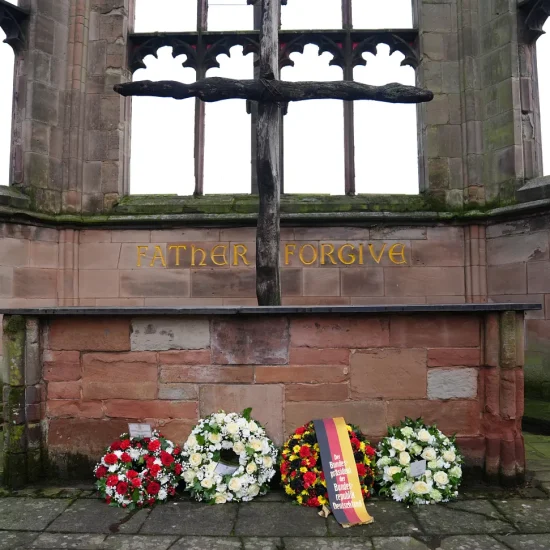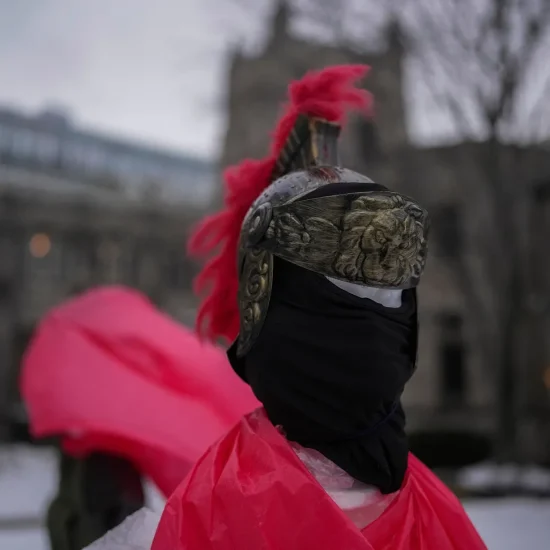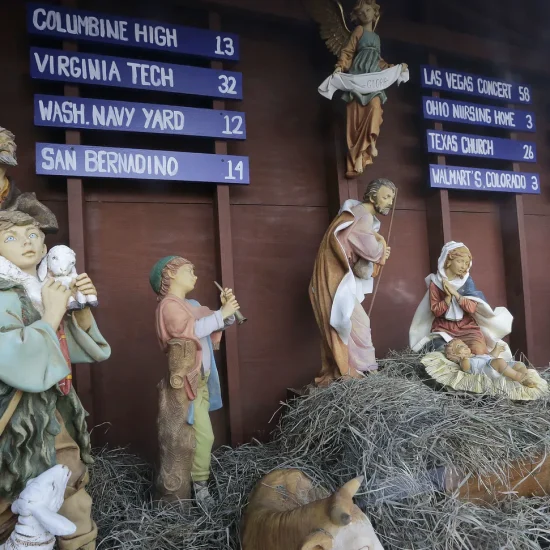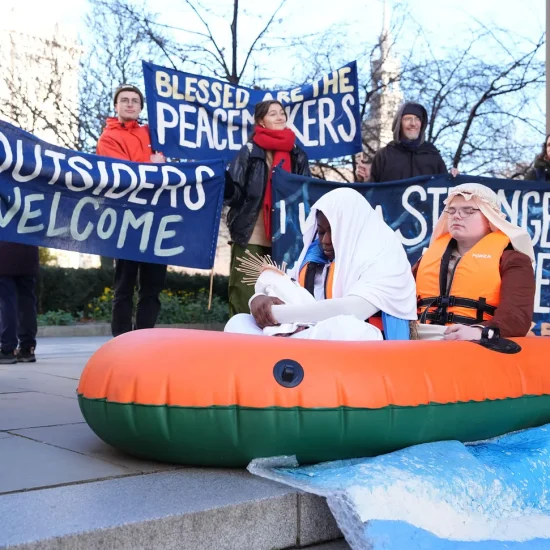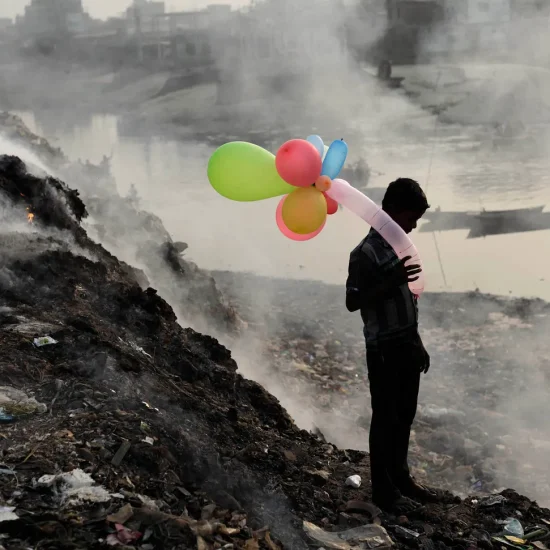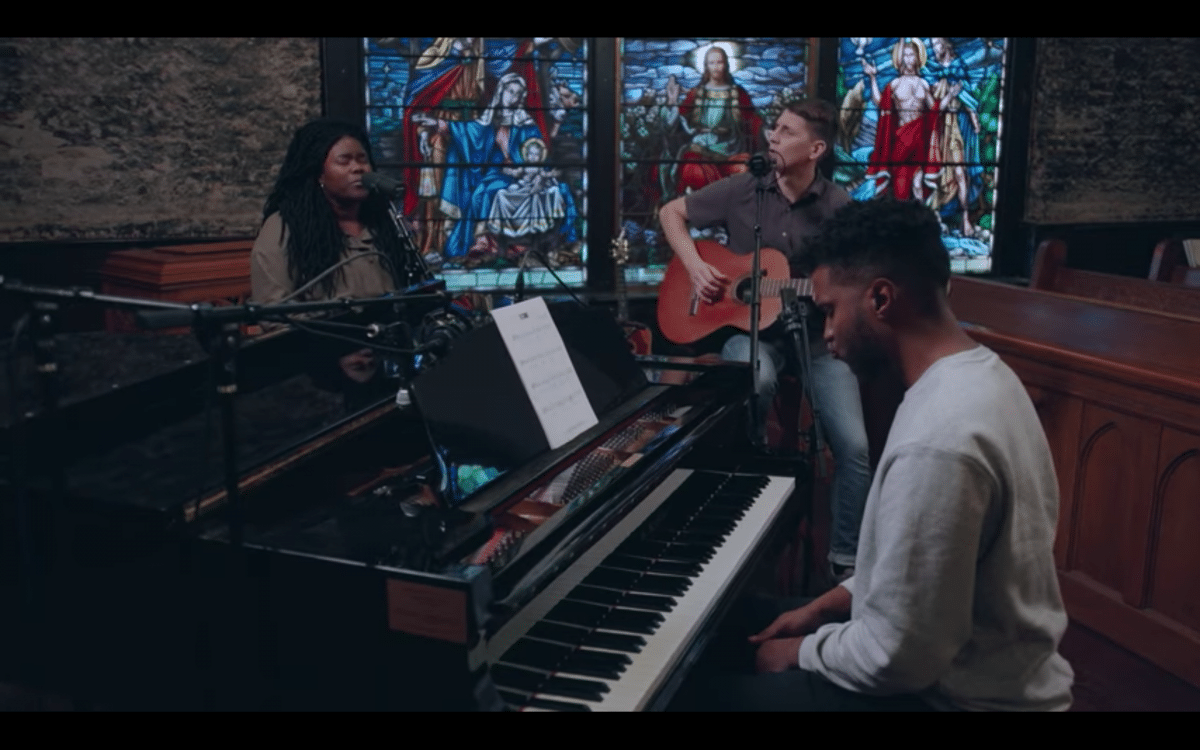
(RNS) — The newest album by The Porter’s Gate is a far cry from the peppy “Rudolph the Red Nosed Reindeer”-type Christmas tunes flooding the radio waves this time of year. Drawing heavily from biblical Scriptures and written with congregational worship in mind, Advent Songs is meant as a hope-filled response to 2021’s weighty realities.
“We’ve lost Advent,” The Porter’s Gate founder Isaac Wardell told RNS. “It’s not just the most wonderful time of year, it’s the time of year when, historically, Christians do self-examination and ponder what it means that Jesus is coming, and Jesus will come again. That produces a really different set of songs and prayers that we need to hear in this moment in history.”
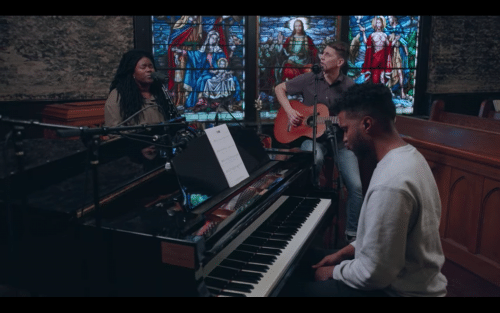
The Porter’s Gate released a new album featuring all Advent songs as a response to the realities of 2021 (Religion News Service screengrab)
The Porter’s Gate is a self-described “worship project” founded in 2017 by Wardell, a longtime worship leader, and his wife Megan. Conceived with the intent of making worship spaces more universally hospitable, The Porter’s Gate begins most album-writing processes with diverse gatherings of songwriters, pastors and theologians who discuss a theme they see missing from church music, such as vocation, lament and justice. These conversations then inspire the songs written for each album.
The ever-evolving project has produced five albums or EPs and has had roughly 300 collaborators over the last four years, including Audrey Assad, Liz Vice, David Gungor, and Urban Doxology. Today, Wardell continues to lead the project from Belgium, where he is a graduate fellow at Catholic University of Leuven. RNS spoke to Wardell about The Porter’s Gate’s unconventional approach to songwriting and its latest album. This interview has been edited for length and clarity.
The Porter’s Gate’s music sounds very different than mainstream Christian music you hear on the radio. How might The Porter’s Gate’s approach to recording music differ from other Christian groups?
For all of our records, we’ve done this thing that in the music world is actually pretty eccentric and old fashioned. We put a bunch of people in the room, they don’t even put headphones on, and we just set up the microphones and perform it live, without a click track. It’s just basically documenting what happened in the studio. And I think that for better or worse that’s kind of why the records sound like they do, a little rough around the edges.
Big picture, these albums sound, sonically and theologically, like the group of people involved. For example, there’s a song on our “Neighbor Songs” record called En Comunidad that has three authors. And there just aren’t a lot of contexts where you would get a Roman Catholic Mexican American woman, a Pentecostal Puerto Rican American woman, and a Presbyterian Episcopal African American guy who collaborate on a piece. I think in terms of theological content, people are getting a kind of a global church experience that way. What the songs sound like also has a lot to do with the people in the room, and I have this personal job of trying to steward this well and hold it all together. We probably write 300 or 400 songs for every 10 that we record and release, so you’re going to distill it down to the things that do have the most impact.
Why form a worship collective rather than a band?
We’ve always avoided the word collective, we call it The Porter’s Gate Worship Project. And this may seem like I’m really splitting hairs, but one reason we call it a project is we’re open-ended about what it means to finish this project. There may come a point where we’ve created a certain amount of resources, and we can say, The Porter’s Gate Worship Project has now come to a close, rather than a band breaking up. From the beginning, we wanted this to be not just about music. About a year from now, we’re jumping into a project on liturgical resources for mental health and trauma recovery. That’s going to be our first one that really involves a heavy use of visual arts. We also like project language because we don’t really know what’s going to emerge out of this.
Can you talk about the religious diversity of the folks involved in The Porter’s Gate?
There’s no threshold of entry except the Apostles Creed. After that, we very intentionally want to have old and young, Black, white and Latin songwriters. Recently we’ve been wanting to be more explicit about having Asian and Asian American participants. Beyond that, we want to have Protestant and Catholic, both the Reformed stream of Protestant and the Pentecostal stream. I’d love to keep expanding. I’m currently in school with Coptic priests from Egypt and those who are Serbian Orthodox. Until now, The Porter’s Gate has been pretty limited to the North American context. We really do want to have all kinds of different perspectives, even if that means sometimes you have people in the room who have some passionate ecclesial issues or differences around Scripture interpretation.
Can you describe the creative process for Advent Songs?
Advent Songs is kind of an outlier in the project because we didn’t have a single songwriting gathering. What we noticed is we’ve had about 9-10 songwriting gatherings in the last five years, and we always end up accidentally writing Advent or Christmas songs. This year, we were in Paris working on this collaboration with COP26 at Glasgow. We did a worship service in conjunction with that conference and have a new album of environmental justice songs coming out in the spring. So we had all these people coming to record this environmental justice record, and we went ahead and booked another studio to record these Advent songs we had building up over these two years. It also feels like a particularly good year for Advent. It feels like, this has been a whole Advent year, a whole Advent two years.
The song “Mary’s Lullaby” describes Jesus as a brown-skinned, black-haired boy, an image that contrasts with many white images of Christ disseminated this time of year. Why include this description of Jesus in the album?
For everybody, part of feeling welcome is seeing yourself in the Scriptures, finding yourself in the story of salvation, walking into a church building and seeing someone who looks like you or has a shared experience. It strikes me that, certainly in White mainline protestant and White evangelical spaces in North America, we have sometimes unintentionally and in some places, grievously, we’ve intentionally created spaces where Black people and Black women in particular don’t see themselves.
This story is a great opportunity to remind people this is a Palestinian woman with her Palestinian child. This is a brown-skinned woman with a brown-skinned child. In light of all of the uprisings happening in America around the Black Lives Matter movement and other movements, this was a great year to say, this Advent season, let’s provide songs that particularly give voice to that kind of incarnate experience of what it means to be a woman of color traversing planet Earth. Mary knew what that experience was, and we can all learn something from that moment.
What do you hope listeners will come away with after hearing Advent Songs?
Everybody is going into this Advent season grieving some kind of loss. It could be something really explicit, like a loved one who died of COVID. But people have lost all kinds of things over the course of the last year or two years, economic losses, being lonely, lost plans or trips. I’m wanting people to feel like these are songs you can approach in your grief.
Secondarily, these songs all inhabit that peace and hope part of Advent. And peace and hope is not just a hippy thing, or the idea of leaving difficult stuff at the door. It has to do with real promises. God promises peace, and Christ comes as our hope.

